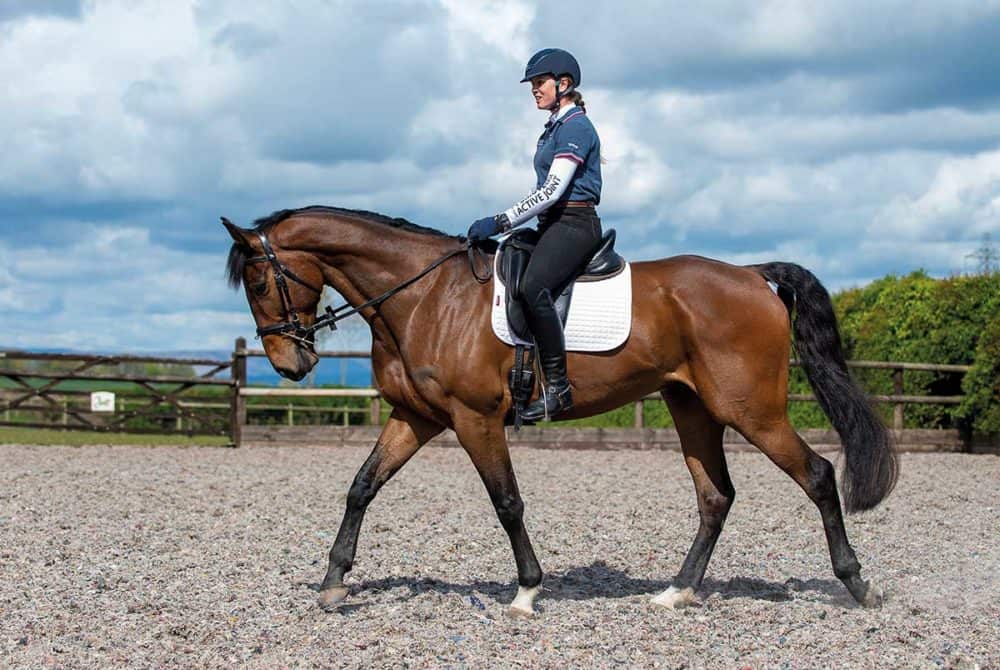Build up your horse’s balance and control with five-star eventer Lydia Hannon
Posted 6th October 2021
Developing balance, suppleness and control are the most important factors in improving your horse’s performance, as five-star eventer Lydia Hannon explains

Part one: Straight and Supple
Creating a happy, strong, and rideable equine athlete doesn’t happen by chance. But it’s not just professionals who can get a horse to this point either. I’m going to share some of my tried and tested techniques with you, because by making balance and control the focus of your riding – whether you’re working on the flat, over fences, or outside the arena – you can build a confident, resilient horse who’ll perform to the best of his ability. After all, that’s what all of us want, whether out sights are set on Burghley, a beach ride, or somewhere in between.
Time to rein it in?
It’s important that your horse works to balance himself, and this begins in the warm-up, too. I like to work horses on a long rein to help with this, but a long rein doesn’t mean trundling around with his nose on the floor and his hindquarters in the next county. Every part of your warm-up matters, and when working on a long rein, the goal is to develop a horse who’s taking the contact forwards and down, while remaining in balance, and light in his forehand.
While riding your horse forward on a soft contact it’s important that he doesn’t drop onto his forehand – if he’s prone to this, remind him to balance himself by making regular half-halts whenever he starts to run. Couple this with praise in the form of a little pat on the neck when you feel he’s carrying himself, so he gets the idea of what you’re after. Keep repeating as necessary to remind him if he reverts back to running or leaning on your hands.
Identifying weaknesses
Understanding your horse’s character, strengths and weaknesses is a major factor in getting the best from him. Ultimately, the most important thing you can do when it comes to training is to listen to what he’s telling you.
If he reacts differently to an aid than you might expect or would hope, think about why this has happened. Is he finding it difficult? Is it because you’re working on the rein he finds hardest, or does he have one hindleg that’s weaker than the other – and what can you do about that?
Working this out by analysing his responses will help you to understand and address his weaknesses more effectively and sensitively.
Grab your copy of December Horse&Rider, on sale 7 October 2021, for Lydia Hannon’s top exercises for improving your horse’s balance and control










